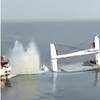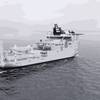Editorial: Editor’s Note
Much of the copy on our pages is spent examining the technical and financial sides of our business — the vessels, systems and equipment, as well as the companies and individual that design, build and operate them.
The human side ... the people and personalities that make the maritime industry what it is and, personally, has kept me coming back for more for the last decade, often finishes a distant third. Some events of the last few months — the death of Chris Cordeau (29) from Portland Tugboat; the collision of the Lee III and Zim Mexico III at the mouth of the Mississippi, resulting in the sinking of the OSV Lee III and the apparent death of five crew members, including the confirmed deaths of Baldemar Villarreal, Jr. (54) Joseph Harl Brown (44), and Lawrence Glass (65); and the explosion and sinking of a chemical tanker off the coast of Virginia, apparently resulting in the death of 21 — helps to put into perspective our business at hand. As proven by the above examples, the business of water transportation can be a dangerous profession, particularly when compared to that of, for example, a magazine editor. Aside from my regular travels to shipyards and courtesy rides aboard vessels, the most harrowing part of my daily life is the commute from Long Island to Manhattan — dodging taxis, buses and the rare crazed bike messengers — on my 20 minute walk to work. Life on the water is another story.
The business of building and operating vessels — while arguably safer than ever — requires a high degree of expertise, support, training and education. The investigation of maritime mishaps is a long, laborious and often inexact process, and a reasoning for the above-mentioned accidents is not even close at hand. During a recent meeting of the EU Temporary Committee on Safety at Sea, the delegation was told by Eduardo Chagas of the Maritime Transport Section of the European Transport Worker’s Federation that the prime reason for casualties was human rather than structural failure. Combined with the current mandates regarding the security of vessels and port facilities, the need for outside assistance to ensure that your company’s executives and personnel are properly trained and informed has never been higher. Critical decisions made today in this regard will have long term affect — either positive or negative — on a company’s bottom line.
More importantly, it could be the difference between life and death.












